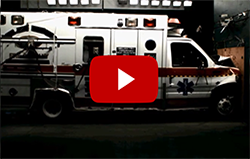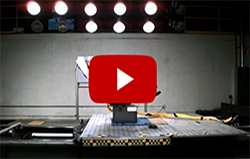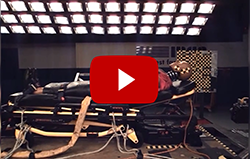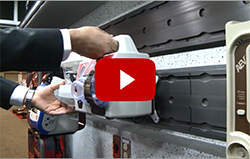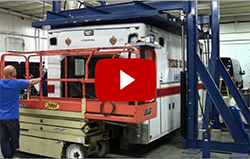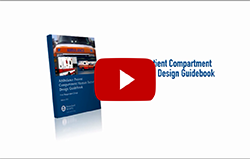EMERGENCY MEDICAL SERVICES WORKERS

Videos
Improving EMS Worker Safety Through Ambulance Design and Testing
NIOSH Video Publication No.: 2017-143
Total running time: 69:00
This 7-part video series, jointly funded by the National Institute for Occupational Safety and Health and the Department of Homeland Security’s Science and Technology Directorate, covers new crash test methods to improve worker and patient safety in an ambulance patient compartment. The series also provides viewers with an overview of the many changes impacting ambulance design, testing, and manufacture. These changes impact the:
- layout of the ambulance patient compartment
- contents housed in the ambulance patient compartment (seating, patient cot, equipment mounts, storage devices)
- the outside or body of the ambulance
Ambulance builders, major ambulance component suppliers, and those responsible for designing and purchasing ambulances will benefit from viewing this video series, which aims to keep EMS workers and their patients safe during ambulance transport.
Video Series Content:
- Ambulance History, Injury Statistics & Standards
Publication No.: 2017-143(1)
Total run time: 14:18Have you ever wondered how ambulances have evolved over time? This video provides viewers with an overview of the history of ambulance design, ambulance crash statistics, and 3 national ambulance standards.
- Crash Testing an Ambulance
Publication No.: 2017-143(2)
Total run time: 7:23Crash testing ambulances uses the same methods applied by the automotive industry when testing cars. This video provides viewers with an understanding of ambulance full vehicle crash testing, and how results impact future design and testing efforts.
- Patient Compartment Seating & Restraint
Publication No.: 2017-143(3)
Total run time: 12:47Seat belts worn by EMS workers in the patient compartment can save lives. In this video, viewers will learn how upper torso restraints can increase safety by reducing head travel and body slide during a crash or near crash event. Product demonstrations are also provided to help viewers learn about available seat types and options.
- Patient Cot, Cot Mount & Patient Restraint
Publication No.: 2017-143(4)
Total run time: 11:18For patient safety, it is important that cots are held to the ambulance floor and patients are properly restrained. In this video, viewers will learn how improvements in cots, cot mount design, and patient restraint can improve patient and worker safety. Product demonstrations are also provided to help viewers learn more about available manual and powered cot options.
- Equipment Mount & Storage Device Testing
Publication No.: 2017-143(5)
Total run time: 8:12Loose, flying equipment such as an oxygen cylinder, heart monitor, or fire extinguisher pose many hazards to workers and patients alike. This video introduces 2 new crash test methods that support safe mounting and storage of equipment and supplies.
- Building a Stronger Patient Compartment
Publication No.: 2017-143(6)
Total run time: 6:23Ambulance patient compartment strength is key to worker and patient safety during a crash. This video provides an overview of 2 crash test methods to make sure the roof is strong enough to handle a rollover, and the floor can support the patient cot.
- Using the Ambulance Patient Compartment Human Factors Design Guidebook
Publication No.: 2017-143(7)
Total run time: 8:46Are you an ambulance designer, buyer or EMS worker? This video provides important information for designing the patient compartment so workers can remain seated and restrained while still attending to their patient.
- Page last reviewed: May 12, 2017
- Page last updated: May 12, 2017
- Content source:
- National Institute for Occupational Safety and Health Division of Safety Research


 ShareCompartir
ShareCompartir

